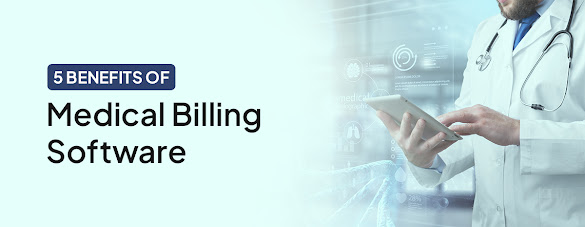EMR Vs EHR – What Are the Essential Differences between EMR and EHR
To the layman, there is a certain amount of equivalence when one talks about medicine and health. Apparently, the two go together and are interconnected which is true to a certain degree but there is a fine distinction when it comes to records, especially those maintained in electronic form, usually in the form of software-based EHR systems. This is the current trend and data is stored as Electronic Medical Record or Electronic Health Record (EHR), the terms sometimes overlapping and used interchangeably. It must be noted that over 93% of hospitals in the USA use EHRs. A closer look shows that these two are disparate as we will differentiate in the ensuing paragraphs. People do tend to conflate EHR and electronic medical record.
Some common functions of electronic medical record:
- Keep individual track of patients
- Identify which patients are due for a consultation/checkup/screening and send out notifications
- Keep track of the patient’s specific health condition and progress as well as response to treatment
- Diagnostic record
- Financial aspects
What is an Electronic Medical Record ?
One way to look at an electronic medical record is to consider it as a subset of the electronic health record. The electronic medical record is usually maintained in electronic medical record systems software supplied by a known vendor. The electronic medical record contains data about a specific patient as regards health, demographics, diagnostics, treatments, and finance, sometimes in relation to a particular health condition or illness. It is almost always created by clinical or non-clinical staff within a medical practice and it is not transferable electronically due to legal constraints. If at all a patent switches to another medical practitioner who requires access to the electronic medical records then the previous clinician would probably print and send a paper record.
What is an Electronic Health Record (EHR)?
The chief and identifying characteristic of the electronic health record is that it is created by an enterprise health system and is shared between healthcare organizations. It is also more wide-ranging in scope, covering not just specific ailments, diagnostics, and treatment but also including an overall picture of the person’s general health conditions and physical characteristics. It also includes data about the patient’s treatments at various other healthcare facilities and clinics, covering their history. It paints a larger picture of the patient’s medical journey. Larger healthcare service providers make use of more sophisticated and secure EHR systems to manage patients’ electronic health records. Access to the EHR of patients helps larger healthcare services to know about their past and arrive at a faster treatment solution instead of having to start diagnostics from scratch. It also saves money and time for both patients and services.
Provided large healthcare services provider obtain their electronic health record system set up by specialist IT vendors there are quite a few benefits:
- Ability to deliver specialized, higher-level specialized care to referred patients
- Save lives by acting fast based on the availability of complete medical records
- Let patients view their own records and thus encourage and motivate them to take better care
- Avoid duplication and redundancy by way of lab tests and diagnostics and save time, effort, and money
- Provide better follow-up care and holistic improvements to patients
Key differences between EMR and EHR:
The above explanations of electronic medical record and EHR show why it is easy to conflate the two together. However, the following fine distinctions should make the differences pointedly clear.
Accessibility
As stated above the electronic medical record is created by a particular doctor or medical facility and such records are treated as confidential. The patient or another healthcare service provider does not have direct access to the electronic medical record.
Electronic health records, maintained in electronic health records software by larger institutions are accessible to patients who can download softcopies. EHR systems are designed to be interoperable between institutions and data is standardized using standards such as Health Level 7 (HL7) that creates standardized formats.
Interoperability
electronic medical record systems used by small medical practitioners may be custom-built by vendors and store data in their specifically created formats that may not be directly accessible by EHRs. It is a closed system. Electronic Health Records software is designed to be interoperable between different institutions across the country or the world with standardized formats and data systems as regards documentation, medicine management, diagnostics, clinical decisions, reporting, financials, and analytics.
It must also be kept in mind that insurance also comes into play and interoperability provides convenience in this regard.
Higher security in EHRs
EHRs by their very nature are used in large public health services and the fact that data is shareable and systems are interoperable imposes a higher level of security and safety standards to prevent such data from falling into the wrong hands or being hacked. As such, larger healthcare services must pay special attention and care to choose electronic health records software and also to the vendor’s capability to provide ironclad security for storage and also for transmission across the internet.
Which one to opt for? EHR or EMR?
The foregoing paragraphs clearly delineate the vital distinctions between EHR and electronic medical record. The question is which one should you choose as a medical service provider?
Individual practitioners and small clinics will find it easier, more convenient, and affordable to go in for compact and easy-to-use electronic medical records software that can be installed and managed in-house. Such practitioners can access patients’ electronic medical record on their office systems as well as through their mobiles. However, it must be kept in mind that there will be quite a few patients whose condition, and treatment required and the lack of facilities in the individual doctor’s clinic will make it necessary for such patients to be referred to larger hospitals with better facilities. As such, the right recommendation is that individual practitioners will find it a wise choice to go with electronic health record software right from the start due to interoperability, higher security, and access. If this is the choice, and it is the right one at that, what remains to be done is to choose the right vendor and get a cloud-based EHR software solution that includes messaging, financials, and billing in one package.




Comments
Post a Comment